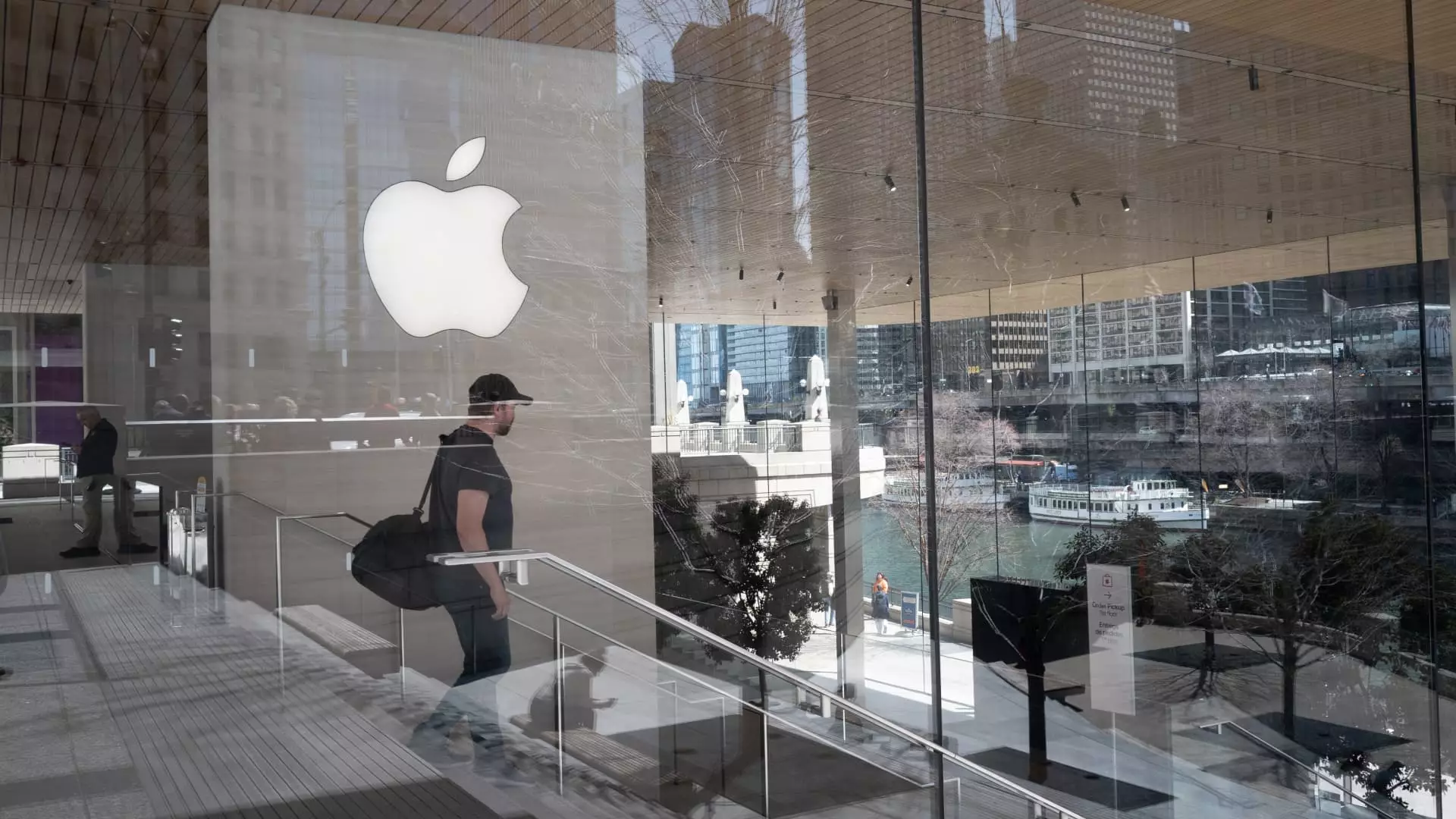In recent months, U.S. stocks have grappled with severe volatility, a phenomenon that spells trouble for even the sturdiest of players like Apple and Adobe. While Goldman Sachs lifts these companies as shining examples of growth, reality tells a different story, one shaped by looming threats and economic instability. Amidst President Donald Trump’s aggressive tariff strategies announced on April 2, significant market indexes—the S&P 500 down 3.8% and the Dow Jones Industrial Average declining 3.7%—foreshadow a tricky landscape that investors can no longer afford to ignore.
Despite the initial optimism suggested by burgeoning stocks like Apple and Adobe, their respective performances raise red flags. Apple’s dependence on China for manufacturing leaves it vulnerable to tariff-induced pricing pressures, while Adobe’s struggle to effectively monetize its artificial intelligence capabilities casts doubt on its projected growth. For investors, this creates a paradox: should one hold on to these ‘reliable growers’ or start diversifying into safer assets?
The Illusion of Stability: Apple’s Balancing Act
Apple may have been a bastion of financial stability, boasting Cash Return on Capital Invested (CROCI) projections exceeding 75% for the next several years, but is that picture changing? With an alarming 19% decrease in its stock value year to date, it seems that previous resilience is fraying at the seams. Investors need to examine the long-term implications of rising tariffs on Apple’s supply chain and pricing strategy.
The company’s shares, despite Goldman’s projected 31% upside, cannot escape the shadow of external economic forces. As an enterprise built heavily on its premium pricing model, any tariff-induced price increase risks alienating its consumer base. Apple’s brand loyalty has indeed been tested before, but can it withstand such external pressures without damage?
The comfort that many investors found in Apple’s previous financial performance may morph into apprehension, showcasing just how fragile perceived strength can be in the face of geopolitical uncertainty.
Adobe: Creativity on the Brink?
Adobe, another heavyweight in the tech ecosystem, boasts ambitious projections from Goldman Sachs, suggesting a staggering potential upside of 82%. Yet lurking beneath this optimistic facade is a nagging concern: can Adobe effectively capitalize on the artificial intelligence wave? The tech giant’s stock has plummeted more than 21% this year, and the company’s first-quarter earnings report raised red flags about its ability to monetize AI effectively.
The question remains: Are Adobe’s financial returns, projected to rise between now and next year, fundamentally sound enough amidst a challenging landscape defined by disruptive technologies? Investors might want to proceed with caution, engaging in a critical assessment of whether Adobe’s growth strategies can withstand increased competition and evolving consumer demands.
The Broader Picture: Market Implications
The undercurrents affecting these tech titans extend beyond their balance sheets. Goldman also highlights firms like Eaton and Uber as promising, but while they may exhibit potential short-term growth, we must consider the implications of sustained economic headwinds. Uber’s rapid stock rise of over 22% this year distinguishes it from its competitors, yet it exists within an overarching theme of market volatility that raises skepticism about longer-term gains.
Financial analysts should not neglect the broader context. What does historical data tell us about companies that appear to thrive during bullish periods but falter during bear markets? The harsh reality remains that no stock, regardless of previous performance, is impervious to market fluctuations. Investors must be bold enough to ask hard questions, staying skeptical of growth projections that may not account for unforeseen disruptions.
In a financial climate rife with uncertainty, the attractiveness of stocks like Apple and Adobe cannot overshadow the harsh realities that underline their projections. The risks they face—from tariffs to technological positioning—invite serious scrutiny. Investors are not served by blind optimism; a more strategic approach, underscoring critical assessments and diversified investments, could better navigate the choppy waters ahead. While the allure of potential growth may be tempting, it is essential to recognize that behind the glittering surface lies a challenging reality that warrants caution.


Leave a Reply